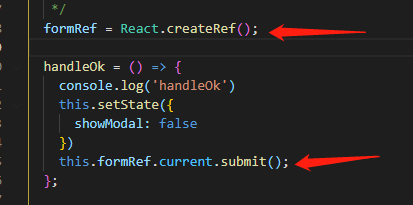我使用jQuery做使用HTTP POST的ASP.NET MVC的Ajax调用。 我希望能够传递值的词典。
我能想到的最接近的是一个字符串的多维数组来传递,但实际上被传递到的ActionResult方法的结果是包含“键/值”对的字符串连接一维字符串数组。
例如下面的“值”数组中的第一项包含以下值:
"id,200"
这里是我的ActionResult方法的一个例子:
public ActionResult AddItems(string[] values)
{
// do something
}
下面是我如何调用从jQuery的方法的例子:
$.post("/Controller/AddItems",
{
values: [
["id", "200"],
["FirstName", "Chris"],
["DynamicItem1", "Some Value"],
["DynamicItem2", "Some Other Value"]
]
},
function(data) { },
"json");
有谁知道如何从jQuery的传递Dictionary对象到的ActionResult方法,而不是一个数组?
我真的想这样定义我的ActionResult:
public ActionResult AddItems(Dictionary<string, object> values)
{
// do something
}
有什么建议?
更新:我试图传递一个逗号值的范围内,它基本上只是使得它不可能使用字符串解析实际上解析键/值对。
通过这个:
values: [
["id", "200,300"],
["FirstName", "Chris"]
]
结果是这样的:
values[0] = "id,200,300";
values[1] = "FirstName,Chris";
Answer 1:
最后我想通了! 感谢您的建议大家! 我终于想通了最好的解决方案是通过HTTP POST传递JSON和使用自定义模型绑定器的JSON转换成词典。 有一件事我在我的解决方案确实是创造了从字典继承,这样我可以将自定义模型绑定器的JsonDictionary类型JsonDictionary对象,它不会在未来造成任何冲突,如果我以后使用字典作为ActionResult的参数为不同的目的JSON。
下面是最终的ActionResult方法:
public ActionResult AddItems([Bind(Include="values")] JsonDictionary values)
{
// do something
}
而jQuery的“$。员额”电话:
$.post("/Controller/AddItems",
{
values: Sys.Serialization.JavaScriptSerializer.serialize(
{
id: 200,
"name": "Chris"
}
)
},
function(data) { },
"json");
然后JsonDictionaryModelBinder需要注册,我已将此添加到Global.asax.cs中内Application_Start方法中:
protected void Application_Start()
{
ModelBinders.Binders.Add(typeof(JsonDictionary), new JsonDictionaryModelBinder());
}
而且,终于在这里是我创建的JsonDictionaryModelBinder对象和JsonDictionary对象:
public class JsonDictionary : Dictionary<string, object>
{
public JsonDictionary() { }
public void Add(JsonDictionary jsonDictionary)
{
if (jsonDictionary != null)
{
foreach (var k in jsonDictionary.Keys)
{
this.Add(k, jsonDictionary[k]);
}
}
}
}
public class JsonDictionaryModelBinder : IModelBinder
{
#region IModelBinder Members
public object BindModel(ControllerContext controllerContext, ModelBindingContext bindingContext)
{
if (bindingContext.Model == null) { bindingContext.Model = new JsonDictionary(); }
var model = bindingContext.Model as JsonDictionary;
if (bindingContext.ModelType == typeof(JsonDictionary))
{
// Deserialize each form/querystring item specified in the "includeProperties"
// parameter that was passed to the "UpdateModel" method call
// Check/Add Form Collection
this.addRequestValues(
model,
controllerContext.RequestContext.HttpContext.Request.Form,
controllerContext, bindingContext);
// Check/Add QueryString Collection
this.addRequestValues(
model,
controllerContext.RequestContext.HttpContext.Request.QueryString,
controllerContext, bindingContext);
}
return model;
}
#endregion
private void addRequestValues(JsonDictionary model, NameValueCollection nameValueCollection, ControllerContext controllerContext, ModelBindingContext bindingContext)
{
foreach (string key in nameValueCollection.Keys)
{
if (bindingContext.PropertyFilter(key))
{
var jsonText = nameValueCollection[key];
var newModel = deserializeJson(jsonText);
// Add the new JSON key/value pairs to the Model
model.Add(newModel);
}
}
}
private JsonDictionary deserializeJson(string json)
{
// Must Reference "System.Web.Extensions" in order to use the JavaScriptSerializer
var serializer = new System.Web.Script.Serialization.JavaScriptSerializer();
return serializer.Deserialize<JsonDictionary>(json);
}
}
Answer 2:
这是我试过了。 节省了大量的工作。 使用Javascript:
var dict = {};
dict["id"] = "200";
dict["FirstName"] = "Chris";
dict["DynamicItem1"] = "Some Value";
dict["DynamicItem2"] = "Some Other Value";
var theObject = {};
theObject.dict = dict;
$.post(URL, theObject, function (data, textStatus, XMLHttpRequest) {
console.log("success");
}, "json");
操作方法:
public ActionResult MethodName(DictionaryModel obj)
{
//Action method logic
}
public class DictionaryModel
{
public Dictionary<string, string> dict { get; set; }
}
Answer 3:
这是可能的自定义模型粘合剂或过滤器。 幕后 - 你将不得不做手工反正(的Request.Form,解析字符串,创建字典TRALALA),但至少 - 您的控制器将是干净的代码将是可重复使用的另一个行动。
Answer 4:
我不认为这是可能通过HTTP POST从jQuery的/阿贾克斯字典传递给一个ActionResult方法。 有一件事我想通了,这似乎是最简单的一起工作是一个JSON对象传递,然后解析出到字典。
下面是从jQuery的发送JSON作为一个伪解释上述呼叫“.post的$”的修改后的版本:
$.post("/Controller/AddItems",
{
values: Sys.Serialization.JavaScriptSerializer.serialize(
{
id: 200,
"name": "Chris"
}
)
},
function(data) { },
"json");
该“Sys.Serialization.JavaScriptSerializer.serialize”功能是ASP.NET AJAX JavaScript库的方法。
下面是上述的ActionResult方法的修改后的版本:
public ActionResult AddItems(Dictionary<string, object> values)
{
// Must Reference "System.Web.Extensions" in order to use the JavaScriptSerializer
var json = new System.Web.Script.Serialization.JavaScriptSerializer();
var data = json.Deserialize<Dictionary<string, string>>(routeValues);
// do something
}
我想,这使得它更通过传递JSON,而不是使用表单集中发送/检索键/值对的集合进行单元测试更容易。 此外,它更容易获得比搞清楚如何建立一个自定义IModelBinder,而当这是唯一一个我需要做这个自定义IModelBinder可能导致与其他的ActionResult方法问题的工作。
Answer 5:
DefaultModelBinder能够到您的文章绑定到数组或字典。 例如:
数组:
public ActionResult AddItems(string[] values)
$.post("/Controller/AddItems", { values: "values[0]=200&values[1]=300" },
function(data) { }, "json");
要么:
$.post("/Controller/AddItems", { values: "values=200&values=300" },
function(data) { }, "json");
对于字典:
public ActionResult AddItems(Dictionary<string, object> values)
$.post("/Controller/AddItems", {
values: "values[0].Key=value0&values[0].Value=200&values[1].Key=value1&values[1].Value=300" }, function(data) { }, "json");
更新:
如果你的价值观是在HTML的输入,然后在jQuery的你可以这样做:
var postData = $('input#id1, input#id2, ..., input#idN").serialize();
// or
var postData = $('input.classOfYourInputs").serialize();
$.post("/Controller/AddItems", { values: postData }, function(data) { }, "json");
更新:
同时检查: 斯科特Hanselman的ComputerZen.com - ASP.NET线格式模型绑定到数组,列表,集合,字典
Answer 6:
这是一个老的文章,但我不禁也不得不说几句话。
@ EU-GE-NE:“DefaultModelBinder能够到您的文章绑定到数组或字典。” 真实的,但至少在我的字典找到所需要的形式符号,而有悖常理。
@克里斯:我昨天完全一样的问题,而试图发布一个JavaScript(JSON)字典传送到控制器的操作方法。 我曾经指出,通用处理字典不同类型的参数完全不同的自定义模型粘合剂。 我只在MVC 3测试了它,可能有一个改进的框架的优势。
对于我的经历的细节和自定义模型绑定的源代码,请参阅我的博客文章在http://buildingwebapps.blogspot.com/2012/01/passing-javascript-json-dictionary-to.html
文章来源: How do I pass a Dictionary as a parameter to an ActionResult method from jQuery/Ajax?





